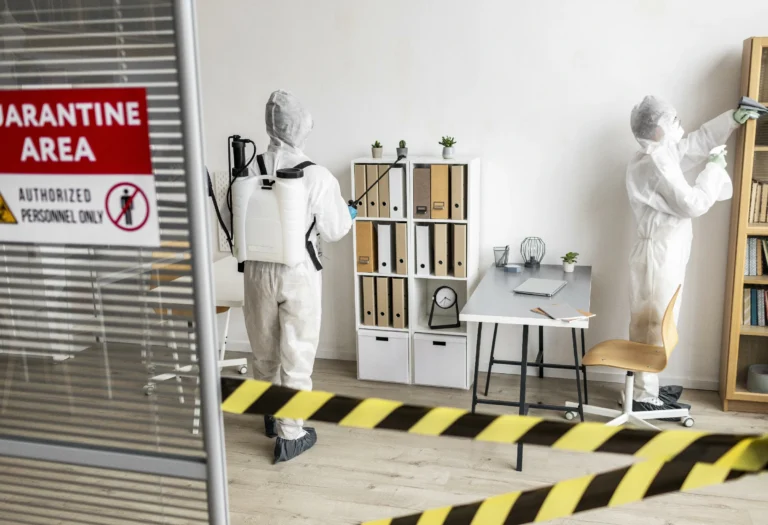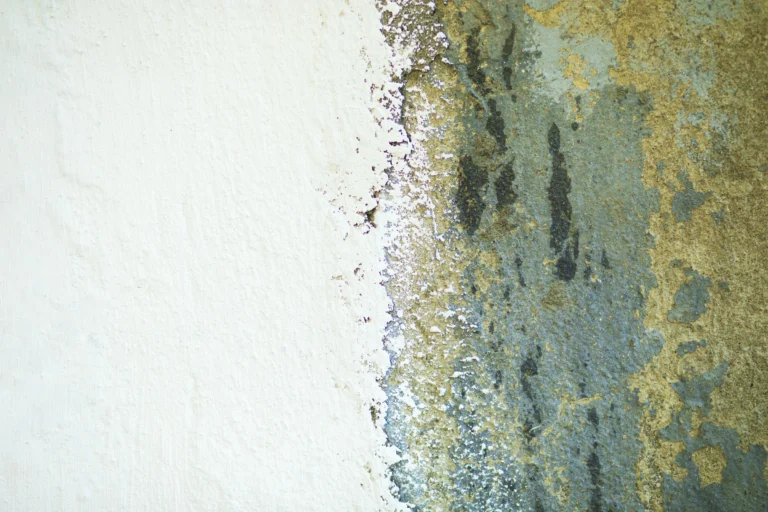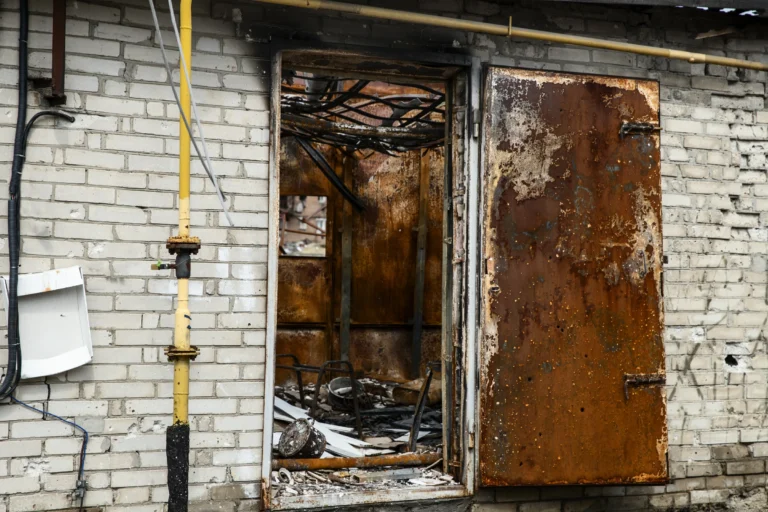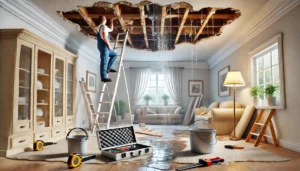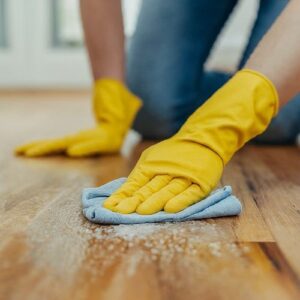INTRODUCTION
Mold in the bathroom is a pervasive issue many homeowners encounter, largely due to the high moisture levels inherent to the area. Bathrooms, with their frequent use of water and often inadequate ventilation, create the perfect humid environment for mold to thrive. Not only is mold unsightly, but it also poses significant health risks. Exposure to mold can lead to a variety of health concerns, ranging from mild allergic reactions like sneezing and itchy eyes to more severe respiratory problems. Understanding how to effectively eliminate and prevent mold in your bathroom is essential for maintaining a healthy living environment and ensuring the longevity of your home’s interior. This blog aims to guide you through identifying, removing, and ultimately preventing mold in your bathroom.
Understanding Bathroom Mold
Bathroom mold thrives in moist and poorly ventilated environments, conditions that are all too common in many bathrooms. The steam from showers and baths increases humidity levels, creating an ideal breeding ground for mold on walls, ceilings, shower curtains, and around plumbing fixtures. Mold growth in bathrooms can range from surface-level issues, characterized by small patches that can be easily cleaned, to severe infestations that penetrate deeper into walls or caulking, posing a challenge to remove and potentially causing damage to the structure of your home.
Mild mold problems often manifest as small, black or green spots that are localized to specific areas, like grout lines or corners. These instances typically arise from surface moisture and can be managed with regular cleaning and improved ventilation. On the other hand, severe infestations occur when mold growth becomes widespread, deeply ingrained, or returns rapidly after cleaning, indicating a more persistent moisture problem or poor air circulation. Such cases may affect indoor air quality and require more intensive cleaning techniques or professional remediation to resolve effectively. Understanding the severity of your bathroom mold issue is the first step towards implementing the right solution to eliminate it.
How to eliminate bathroom mold?
Implementing preventive measures is crucial in the battle against bathroom mold. Here are three key strategies:
Ensure Proper Ventilation:
Ventilation is your first line of defence against mold. Always use exhaust fans during and after showers or baths to help remove moisture from the air. If possible, open windows to allow for additional airflow, which can also help reduce humidity levels in the bathroom.
Regular Cleaning:
Mold can’t grow where there’s no buildup of moisture or organic material. Establish daily and weekly cleaning routines to wipe down surfaces, especially in areas prone to water accumulation like showers, bathtubs, and sinks. Using mildew-resistant shower curtains and quickly repairing any leaks can also prevent mold growth.
Moisture Control:
Besides ventilation, controlling the overall moisture level in your bathroom is vital. Dehumidifiers can be highly effective in maintaining lower humidity levels, making the environment less hospitable for mold. Additionally, after use, squeegee shower walls and doors to remove excess water and reduce drying time.
By adhering to these preventive measures, you can significantly reduce the risk of mold taking hold in your bathroom. Regular vigilance and maintenance create an environment that discourages mold growth, ensuring your bathroom remains a clean and healthy space.
Step-by-Step Guide to Eliminate Bathroom Mold
Identify Mold-Prone Areas
– Mold typically grows in damp areas, so inspect your bathroom for any signs of mold on ceilings, walls, between tiles, around fixtures, and in any other areas that frequently come into contact with moisture. Pay special attention to corners and hidden spots where mold might not be immediately visible.
Safe Cleaning Solutions
– For DIY cleaning, a mixture of water and white vinegar or water and baking soda can be effective for minor mold issues. These natural solutions help kill mold without introducing harsh chemicals into your home. For more stubborn mold, consider commercially available mold removers, ensuring they are safe for use on the affected surfaces.
The Cleaning Process
– Begin by wearing protective gloves and a mask to prevent inhalation of mold spores. Apply your chosen cleaning solution generously to the moldy areas and let it sit for an hour to penetrate and kill the mold. Then, scrub the area with a brush to remove the mold from the surface. Rinse thoroughly with water and dry the area completely to prevent mold from returning.
Preventing Future Growth
– After removing the mold, take measures to prevent its return. Sealing grout lines with a waterproof sealant can help protect against moisture penetration. Consider also applying mold-resistant paint to walls and ceilings, especially in areas that are frequently exposed to steam and water. Regularly inspect and maintain these areas to ensure they remain mold-free.
Following these steps can help you effectively remove mold from your bathroom and take proactive measures to prevent its recurrence, keeping your bathroom clean, healthy, and mold-free.
When to Call Professionals
There are several indicators that mold removal in your bathroom might require professional intervention. If you encounter extensive mold growth covering large areas, mold that persists despite regular cleaning, or mold located in hard-to-reach places like inside walls or under flooring, it’s time to call in the experts. Additionally, if anyone in your household starts experiencing health issues such as allergies or respiratory problems that you suspect are related to mold, professional assessment and remediation become crucial.
Professional mold remediation services offer several benefits. Experts have the knowledge, experience, and equipment necessary to safely and effectively remove mold. They can also identify the source of moisture causing mold growth and recommend solutions to prevent future issues. Professional remediation ensures that the mold is thoroughly removed, protecting the health of your household and the integrity of your bathroom. Engaging professionals give you peace of mind, knowing that the mold issue is being handled comprehensively.
Conclusion
In conclusion, tackling bathroom mold is not just about maintaining the appearance of your home; it’s a crucial step for ensuring the health and well-being of everyone in the household. Mold can have serious health implications and can also lead to significant damage to your property if left unchecked. By understanding the conditions that lead to mold growth and implementing strategies to prevent it, you can maintain a healthier, mold-free bathroom. Regular cleaning, proper ventilation, and moisture control are key to preventing mold. Remember, taking proactive steps to mitigate mold growth protects both your home and your health. If you encounter persistent mold issues, don’t hesitate to seek professional advice and services to ensure a comprehensive solution. Let’s commit to maintaining a clean and safe environment in every part of our homes, starting with mold prevention in our bathrooms.
Alpha Construction & Restoration Pasadena Fire and Smoke Damage repair in Pasadena CONTACT US NOW! Fire and Smoke Damage repair in Pasadena …
Biohazard/Crime Scene Cleaning “Professional and Compassionate Cleanup Solutions” Biohazard/Crime Scene Cleaning Service Handling biohazard and crime scene situations requires not only technical …
Alpha Construction & Restoration Alhambra Emergency services are available 24/7 CONTACT US NOW! Contact us now! Our services We provide the best …
Alpha Construction & Restoration Simi Valley, CA Emergency services are available 24/7 CONTACT US NOW! Contact us now! Our services We provide …
Alpha Construction & Restoration Santa Monica Emergency services are available 24/7 CONTACT US NOW! Contact us now! Our services We provide the …
Hazardous & Toxic Material Cleanup Service “Safeguarding Environments from Hazardous Substances” Hazardous & Toxic Material Cleanup Service Handling hazardous and toxic materials …
Water Damage Restoration “Rapid, Reliable Solutions for Water Damage Emergencies” Water Damage restoration Water damage can strike when you least expect …
Alpha Construction & Restoration Arcadia Emergency services are available 24/7 CONTACT US NOW! Contact us now! Our services We provide the best …
Alpha Construction & Restoration La crescenta Emergency services are available 24/7 CONTACT US NOW! Contact us now! Our services We provide the …
Alpha Construction & Restoration San Dimas, CA Emergency services are available 24/7 CONTACT US NOW! Contact us now! Our services We provide …
Storm/Disaster Recovery “Rapid Response for Weather-Related Emergencies” Storm/Disaster Recovery When storms or disasters strike, the aftermath can be overwhelming. Alpha Construction & …
Mold Remediation Service “Effective Solutions for Mold Challenges” Mold Remediation Mold infestations can be more than just an unsightly issue; they …
Alpha Construction & Restoration Long Beach, CA Emergency services are available 24/7 CONTACT US NOW! Contact us now! Our services We provide …
Alpha Construction & Restoration Altadena Fire and Smoke Damage repair in Altadena CONTACT US NOW! Fire and Smoke Damage repair in Altadena …
Odor Removal Service “Eliminating Unpleasant Odors, Restoring Freshness” Odor Removal Service Unpleasant odors in your home or business can be more than …
Alpha Construction & Restoration San Gabriel, CA Emergency services are available 24/7 CONTACT US NOW! Contact us now! Our services We provide …
Fire & Smoke Damage “Expert Care for Your Fire-Damaged Property” Smoke & Fire Damage Experiencing fire damage can be a traumatic …
Alpha Construction & Restoration Monrovia Emergency services are available 24/7 CONTACT US NOW! Contact us now! Our services We provide the best …
Alpha Construction & Restoration Santa Clarita Emergency services are available 24/7 CONTACT US NOW! Contact us now! Our services We provide the …
Alpha Construction & Restoration Pasadena Emergency services are available 24/7 CONTACT US NOW! Contact us now! Our services We provide the best …
Alpha Construction & Restoration Burbank Emergency services are available 24/7 CONTACT US NOW! Contact us now! Our services We provide the best …
Alpha Construction & Restoration El monte Emergency services are available 24/7 CONTACT US NOW! Contact us now! Our services We provide the …
Alpha Construction & Restoration Beverly Hills Emergency services are available 24/7 CONTACT US NOW! Contact us now! Our services We provide the …





